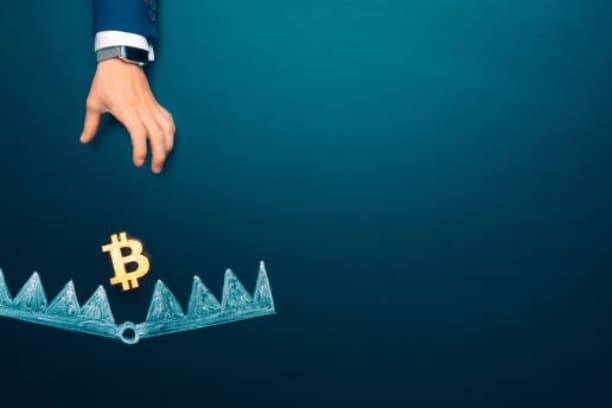How do I trade NFT Collectibles? Complete Trade Process Explained
With the gradual rise of NFT (Non-Formalized Token) in the global market, more and more people are turning their attention to this new digital asset and starting to trade it. Whether you want to buy, sell, or collect, you need to understand the complete trading process. This article will introduce how to trade NFT on different platforms in detail, from choosing the right wallet to completing the transaction, helping you to smoothly enter this market full of opportunities.

Choosing the right cryptocurrency wallet
Before you start trading NFT, the first step is to choose a cryptocurrency wallet that supports NFT. There are many types of wallets on the market, such as MetaMask, Trust Wallet and Coinbase Wallet. These wallets are not only capable of storing cryptocurrencies, but also support NFT storage and management. Factors to consider when choosing a wallet include security, ease of use, and whether or not it supports NFTs according to the ERC-721 or ERC-1155 standards (which are the most common NFT standards).
How to choose a wallet:
- safety: Prevent lost assets by choosing a wallet with multiple authentication features and backup options.
- Scope of Support: Make sure the wallet supports the NFT platforms and chains you want to trade.
- Ease of use: The interface is simple and easy to use, especially for newcomers, and an intuitive wallet would be more suitable.
Choose a trading platform for NFT trading
Choosing the right NFT trading platform is one of the keys to successful trading. The most popular NFT trading platforms include OpenSea, Rarible, SuperRare, etc. These platforms support creators to upload NFTs and allow buyers to purchase them. These platforms allow authors to list their NFTs and allow buyers to purchase them. Different platforms have slightly different fees, liquidity, and trading rules, so it's important to compare them carefully.
Main trading platform features:
- OpenSea: One of the largest NFT trading platforms in the world, supporting all types of NFTs with a handling fee of around 2.5%.
- Rarible: Runs on a decentralized model and supports creators to issue and sell NFTs with the same 2.5% handling fee.
- SuperRare: Focuses on high quality artworks, mainly for artists and collectors, with higher handling fees, but with the highest quality works.
Connect your wallet with the trading platform
Once you have chosen a suitable NFT trading platform, you will need to connect your cryptocurrency wallet to that platform. In the case of OpenSea, you will be asked to connect via a wallet such as MetaMask after logging in. After successful connection, the NFT and cryptocurrencies in your wallet will be displayed on the platform.
Procedure:
- Go to the trading platform website and click on the "Connect Wallet" option in the upper right corner.
- Choose your wallet type and follow the prompts.
- Verify that your wallet is successfully connected to the platform, which usually displays your wallet's address or assets.
Selecting and purchasing NFT collections
Once you have successfully connected your wallet, you can start searching and selecting your favorite NFT collectibles. Platforms often provide filtering and searching tools to help you quickly find items of interest. Once you've selected an NFT, look at the details, including price, artist background, trading history, and more.
Purchase NFT Steps:
- Browse through the different NFTs on the platform and choose the ones that interest you.
- Click to go to the NFT details page and check all the information about the project such as creator, description of the work, etc.
- Click the "Buy" button and the system will display the current price and handling fee. After confirming, you will pay via wallet.
Selling your NFT collection
If you own NFTs and want to sell them, trading platforms usually offer the ability to list them as well. You can list your NFT, set a price and wait for potential buyers to bid. You will need to pay a fee to sell your NFT, and the platform will also provide a for-sale page where you can check the status of your transaction at any time.
Sell NFT steps:
- Find the NFT you wish to sell on the platform and click through to the details page.
- Click on the "List" or "Sell" option to set the price at which you wish to sell.
- Choose a payment method and confirm the transaction. The platform will charge you a percentage of the handling fee.
How to Secure NFT Transactions
Security is the main concern of every participant in the NFT trading process. In order to protect their assets, users should choose a reliable trading platform and avoid trading with unknown counterparties. It is also very important to keep your wallet secure. It is recommended to enable dual authentication and update your wallet's backup on a regular basis.

Several recommendations to improve the security of transactions:
- Choose a reputable platformThese platforms have a good reputation and a relatively high level of security, such as OpenSea and Rarible.
- Using Hardware Wallets: For managing large amounts of money, hardware wallets (e.g. Ledger, Trezor) are a safer option.
- Fraud Alert: Don't click on unknown links, especially in social media or Telegram groups, where fraudsters may be using fake platforms for their scams.
Understanding NFT Transaction Fees and Taxes
When trading NFT, the transaction fee is a part that needs to be known in advance. Most platforms charge a percentage of the transaction fee, usually ranging from 2.5% to 5%. Sellers may also face tax issues after conducting NFT transactions. Taiwan's current tax policy on NFT is unclear, but if NFT transactions are profitable, they may still be subject to tax in accordance with the law.
Frequently asked questions about fees:
- Platform Handling Fee: Transaction fees are usually between 2.5% and 5% depending on the platform.
- Blockchain Transaction Fees: When trading on chains such as Ether, there is a "Gas Fee" which fluctuates based on the volume of transactions and network congestion.
- TaxationTaiwan's tax authorities have not yet made clear regulations on NFT transactions, but the profits from such transactions may still be subject to income tax and other tax issues.
Conclusion
The process of trading NFT collectibles, from choosing the right wallet to selecting the platform and completing the transaction, requires careful treatment. Knowing the right process and being aware of the security and fees associated with it can effectively increase your trading efficiency and protect your assets in the NFT market. With the rapid development of the NFT market, there may be more innovations and regulations in the future, and understanding these changes is an important issue for everyone involved.














